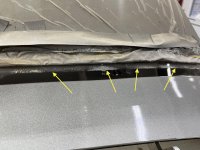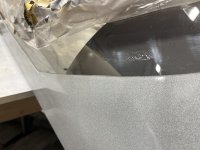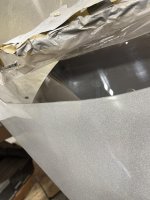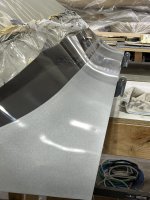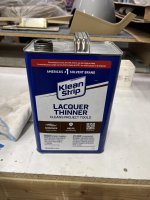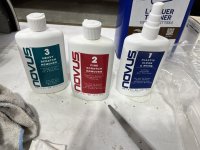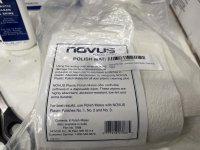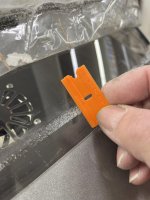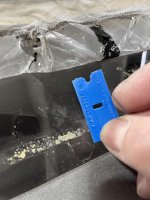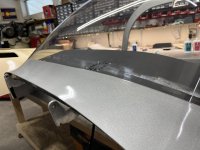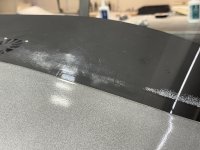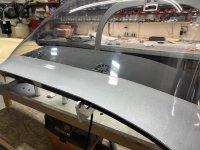Here's what I have tried, so far.
1. Isopropyl 99% - no effect
2. Plastic razors (blue and orange) - no effect
3. Lacquer thinner - doesn't soften the plexiglass so, I tried removing the primer with it. No joy by itself.....but,
4. Lacquer thinner to soften the primer a bit, then the plastic razor to scrape it off. This works! It's agonizingly slow, but, it works.
5. Polish the little scratches resulting from step 4 with Novus
6. Nice, clean result!
My advice. Don't get any primer or paint on your canopy like I did! Masking is cheap insurance. Take your time and do it thoroughly! This will cost me at least 1 day.
Oh, I have a call in to the manufacturer of the canopy to see what they recommend and will post the answer. But, in the meantime, unless there is a quicker solution, steps 4 and 5 above will be my process.
Oh, and that primer (Sherwin Williams Urethane) sticks to the plexiglass like frickin GLUE!! Getting it off requires lots of chisling with the little 'razors'. If this is any indication of how well the paint will stick to the aluminum, this airplane will never need a repaint.
Here's the place on the canopy I tested the process above:
View attachment 51973
And, this is what it looks like after and before polishing:
View attachment 51975
Then, after polishing: (don't judge my crappy paint job, it hasn't been cut and buffed, yet.)
View attachment 51974
Lacquer thinner was runofthemill Ace hardware
View attachment 51976
Novus polish is three stages
View attachment 51980
Make sure to use the Novus Polish Mates. They are spendy, but work very well, an remember...it's your airplane we're talking about. I have tried to poor-boy this part with microfiber cloths and not been happy. So I bought the bulk pack of Novus Mates. They work.
View attachment 51977
The plastic 'razor' blades were from Grainger. Orange and blue varieties. I bought them both cause I didn't know the which was better for this process, but in the end I could find no difference. I think the materials they are made from are different and may matter for some purposes, but not this one.
View attachment 51978
View attachment 51979
